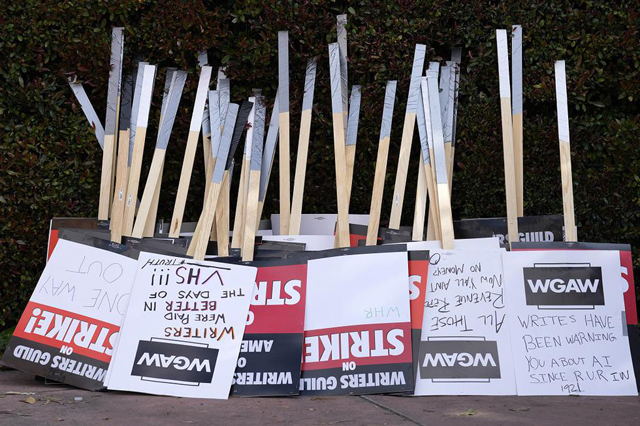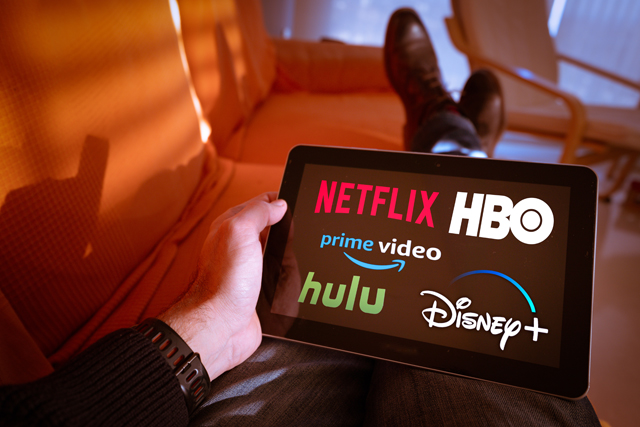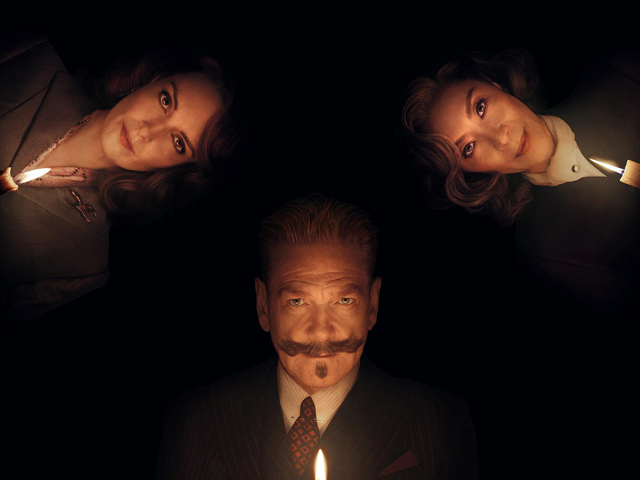
And now our strike has ended. The battle was fought long and hard, but like all things do it too came to an end. After a staggering 146 days of work stoppage and picketing outside in the sweltering California summer heat, the Writer’s Guild of America has finally reached a deal with the AMPTP organization representing the top studios in Hollywood. The resulting deal represents a monumental shift for the industry. The Writer’s Guild has managed to get almost everything they were seeking through the deal, which includes much needed protections against AI technology, revised residual compensation to be better reflective of the streaming markets’ value, as well as improvements in minimal staffing for televised series and an increase in overall base pay. The fact that the studios eventually met all these demands in the end shows that the strike was an unprecedented victory for the WGA, and a masterclass in showing the power of solidarity in labor. Though while the WGA is celebrating the hard won gains they have achieved in this new deal, it has come at a steep cost for many. Many writers, especially those who were already living paycheck to paycheck, have had to endure nearly 5 months worth of no income, and many who were signed onto contracts with the studios also saw those deals thrown out during the work stoppage. With the whole industry at a standstill, no work was being done, which meant a lot of other industries dependent on the Hollywood machine were suddenly feeling the pinch of reduced income. And yet, even with all that hardship, most of the WGA membership would have voted overwhelmingly to strike still, knowing that the future of their profession was absolutely worth the sacrifice that they endured. And at the same time, showing the example of a unified front in the face of clear cut corporate greed has led to a renewed faith in organized labor that has transcended beyond just Hollywood.
There were a couple of things that did work out in the WGA’s favor during the whole Summer of striking. Chief among them was that they were joined on the picket lines by the powerful Screen Actors Guild, who began their own strike in July. Fighting for pretty much the same demands that the WGA was seeking, SAG-AFTRA injected a fresh amount of energy to the ongoing WGA strike. While the studios can continue to function for a while with the Actors still going to work on already written projects, having both guilds striking at the same time very much brings the whole studio system to a screeching halt. Without the star power to help with marketing, movies releasing at the same time while the strikes are going on suffer from reduced visibility. In the last couple of months, we’ve really seen how much of a difference red carpet premieres, press junket interviews, talk show appearances, and plugging on social media really affects the box office performances of a lot of movies. If it weren’t for the grass roots grown phenomenon of “Barbenheimer,” the back end of the summer might have been severely depressed at the box office. It was clear from the dismal performances of Disney’s Haunted Mansion (2023), Warner Brothers’ Blue Beetle (2023), and many other late summer films that lack of star studded publicity came at a steep cost for the studios. It also motivated a lot of highly anticipated, Oscar-hopeful films to move off of the Fall 2023 calendar, like Dune Part Two (2024) which now has a Spring release next year. It’s clear that the movie studios know how much they need their stars to promote their movies, and yet it is insane that it took them this long to be willing to sit down and work out a deal.
One thing that the movie studios seemed to fail to anticipate was the strength of solidarity between not just the striking unions, but from all corners of the industry. The WGA and SAG-AFTRA received support from two of the nation’s strongest unions, the Teamsters and IATSE, who vowed to not cross any picket lines or accept work from any production company not cleared by the striking unions. The WGA and SAG-AFTRA also had much more favorable coverage from the press this time around. Though there are some industry rags that remained neutral throughout the strike, a lot of online media bloggers, content creators, and fan communities stated their solidarity with the striking workers, including many from day one. One of the positive changes that social media has played in changing the game with labor disputes is that it has allowed striking workers to have better control over the narrative. In past strikes, the studios have easily painted the picketers as a spoiled, angry mob; defined more by the big names than the average working joe, and thereby more easily to portray as ungrateful. This time around, the world didn’t see the striking writer’s as an angry mob, but instead as individuals because many of them were using their socials to get their own story out there for people to hear. We came to learn about people who were getting pennies on the dollar in residuals from streaming, all because the studios were exploiting that loophole in the Guild’s contract. Striking writers were telling the world that they were not unlike the rest of them, working multiple jobs just to make it in Hollywood with the high cost of living, and that the studios were unfairly taking the lion’s share of the hard work that they were doing. The striking workers finally had a way to outreach and get their message out there through the studios’ interference, and it very much helped to keep the solidarity within the union strong up to the end.
The studios mistakenly believed that the end result of this strike would mirror how the 2007-08 strike ended, with the union being forced to compromise and grant the studios their leeway. That strike ended because the Writers Guild had no other choice as they ran out of options while the studios still held most of the cards. They got a modest increase in compensation, but their inability to define what online media would become eventually led to the impasse that ignited the strike this year. This time around, the Writer’s Guild managed to have the tides of fortune work out in their favor. If Hollywood itself wasn’t in more of a precarious position that it is in now post-pandemic, the WGA’s strength against the AMPTP’s tactics may not have been so resilient. If anything, the studios have done themselves no favors throughout this whole strike ordeal. Every chance that the studios had to look like the better team in this fight was wasted. The CEO’s of the studios looked especially out of touch with where the mood of the country was during these strikes. It doesn’t help when you attack striking workers asking for a better living wage while you are vacationing on your million dollar yacht or going to a closed door meeting with the most elite business men in the world. Never mind that many of these executives also gave themselves insanely high bonuses at a time when many studios have been forced to reduce their labor force. If the goal was to appear as the good guys in this fight, the executives very much failed at that during the whole ordeal. They even believed that delaying many of these movies would cause people in the fan community to turn against the striking worker, positioning them as the reason why the movies were being pushed back. But that tactic did not work as it became clear from the negotiated deal that the studios could have easily met the demands of the unions from the beginning, and the fan community itself knew that striking workers are not the one’s wasting everyone’s time.
That in the end is what was lost most in this fight; time. While it won’t be felt for another half year or so, we are going to see the ramifications of nearly 5 months of work stoppage felt both at the box office and on television. Nearly half a year of what could have been productions moving forward for eventual completions and releases into the next year, all wasted. The Spring and Summer of 2024 may end up looking a little light next year at the box office, as many of the films slated for release will need to catch up quickly or be pushed back further in order to be in a finished state. And this comes at a terrible time for the theatrical industry, which was just beginning to pull itself out of the hole created by the Covid-19 pandemic. Movie theaters are going to have to endure a period of time where fewer big tent-pole films are going to be heading to their screens in the next few months, and it’s going to put them right back into a precarious position financially. If it weren’t for some intervening on the behalf of Taylor Swift and her concert film, movie theaters would likely be in another round of theater closures. And the fact that the studios didn’t even offer up another offer for several months to the WGA or even join them at the negotiating table is a sign of inexcusable recklessness on a financial level. The WGA remained firm on their terms, so it was always in the hands of the studios to bring this strike to a quicker end, and they wasted so much time over misguided slander tactics. In the end, the studios themselves likely will lose more money from the strike then they would’ve given up if they had met the terms of the WGA’s demands in the first place.
The total cost for Warner Brothers alone has been estimated to be around $500 million in lost revenue due to the strike, which kind of takes the shine out of their Summer victory with Barbie (2023). They now no longer have a sure fire hit to compensate the loss after moving Dune Part Two to next year, and this is the financial woes of just one company. The total cost of this strike is said to be in the billions for the local economies dependent on the film industry. California alone is going to see a devastating financial blow from the strikes. There is a whole economy surrounding the film industry, from technicians working on building sets and setting up lighting, to caterers who feed the crews, to costume makers and make-up artists, and whole variety of freelancers who sometimes only get a single days pay. Local businesses that supply film productions with what they need also feel the loss of revenue coming in because of the work stoppage across town. The same also applies to places outside of Hollywood, such as filmmaking hotspots like New York, Atlanta, Vancouver, and even small towns that lucked out in being selected for a film shoot. Many of these places that believed they were going to see an increase in business due to movies and shows being prepped suddenly had to adjust their timeframes or see the productions disappear altogether. It was getting to a point where outside forces were looking to intervene. California Governor Gavin Newsom suggested acting as a neutral broker to get both sides back to the negotiating table at a time when no progress was made. There could have been a lot of blame leveled at both sides, but with the WGA going in with clear cut goals from the beginning, and the studios misguided in their belief that they could wait them out, the WGA clearly won over more sympathy throughout this whole ordeal. The moment an unnamed studio executive made the stupid public statement that he or she would like to see the writers lose their homes or apartments during the strike, that is when this whole thing should have been over and the studios should have returned to the negotiating table to save face. Everything else is a self inflicted wound on their part.
And the WGA now has the things that they should have been getting over the last decade signed into their hard won contract. One of the strongest achievements, that will very much be a huge factor in Hollywood contracts moving forward are the protections against AI. AI can no longer be used as a replacement for a writing staff, or be used to justify a reduction in pay, but writers and productions who chose to use AI as a tool can be granted permission by the union. This is a change in the contract that helps to prevent the existential threat that AI posed in replacing writers completely, thereby ensuring that Screenplay and Teleplay writing will remain a cornerstone profession within the industry. The new contract also updates the residual pay that a writer will receive from the amount of play that their work generates on streaming platforms, helping to make it much more fare and on par with residuals earned on network television. Another crucial change made in the contract are the terms of length of employment and size of writing teams for television shows. The increasing practice of “mini-rooms” on streaming shows had decreased the number of opportunities for up-and-coming writers to be staffed on a frequent enough basis to earn a fair living wage, and it was also affecting the quality standards of many shows, as too few writers were stretched thin across multiple projects. Now, shows that run a certain number of episodes, whether they be for streaming or not, must now meet the minimum requirement for a writing staff. There are special carve outs for showrunners who wish to write a show by themselves, but the new deal allows for shows of all kinds to have the right amount of writers it needs and ensures that they will be compensated fairly based on the work they do. The WGA did have to compromise on the transparency of the studios streaming numbers, which the studios still wanted to keep out of the public eye for now, but they’ll still get internal accounting to ensure which shows are performing better than others in order for the obligations of the new deal to be met. What is great about the WGA striking this new deal, and pretty much getting almost everything that they were asking for is that it provides the rest of Hollywood a blueprint for future labor negotiations throughout the industry.
It should be noted that this is still a deal in the early stages, with the two sides in agreement on the terms. The deal still needs to be put up to a vote with the 11,000 strong WGA membership, but considering that the negotiating team and the union membership have fully endorsed this deal, and it seems to be facing little resistance across the membership based on reactions from social media, it is almost certain to be ratified very soon. Even still, it will take weeks for the writers to be fully back to work as contracts will need to be updated or completely renewed. Also, let’s not forget that the SAG-AFTRA strike is still very much actively going on as of this writing. Thankfully, the WGA were fighting for many of the same things that the Actors are seeking and this deal will hopefully bring a swift end to their strike as well, if the studios meet the same terms. There is a meeting set for next week, so hopefully this is the case. There are a lot of lessons to be learned from these crucial few months. One is that the unions in Hollywood are a lot stronger and more unified than people realized. If the only “scabs” that the studios pulled off in these last 5 months were Drew Barrymore and Bill Maher (both of whom quickly backtracked after immediate backlash) than its a definitive sign that union solidarity is at it’s strongest point ever in Hollywood, and that extends to nearly all departments. Despite the personal economic toll, there was no resistance to the WGA or the SAG-AFTRA’s fight amongst the working class of Hollywood, and the fact that the unions have come out victorious gives renewed hope to union workers everywhere that they too can regain their fair share from greedy corporate executives who are growing wealthy off of their labor. The hope is that the benefits won today bear out in the long run. The industry is going to take a financial hit because of the days wasted without a deal made, and that will have a trickle down affect on movie theaters and local businesses dependent on production. There will also be a shake-up in productions going forward, as many studios chose to end long running contracts rather than retain writers and actors under exclusive deals by meeting their terms. There will be consequences of the work stoppage, but long term the strike helped to ensure that a career in film and television will be one with a future; not replaced with AI technology, but instead one worth pursuing if you’ve got a story to tell and the belief that you see that vision to a reality. That’s something that is absolutely worth fighting for, and for many, the WGA gave many what they always try to achieve individually; a happy ending.




